Student Union
Lessons in Finance Could Reduce Student Debt
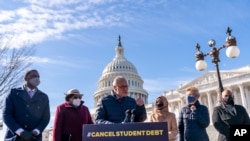
Millions of student loan borrowers owe a collective $1.7 trillion in debt, but many commit to loans without knowing what they are signing up for, research shows.
Students lacking education in personal finance are more likely to underestimate future student loan payments, wrote Nikolaos Artavanis of Virginia Polytechnic University, and Soumya Karra of the University of Massachusetts.
Nearly 40% of borrowers who said they lacked understanding of how loans work underestimated their future payments by more than $1,000 a year, the researchers wrote in The European Journal of Finance in January 2020. Understanding their future financial commitment corrected their estimates by 17-18 percentage points.
And some borrowers concluded that although the educational benefits outweighed the disadvantages of taking on student debt, they would have borrowed less if they had understood the financial and mental strain those loans caused.
Student debt is a flashpoint for many Americans and a cause among politicians.
President Joe Biden has allocated $40 billion to help students with debt, emergency relief, tuition and housing.
Democratic Senator Elizabeth Warren and independent Senator Bernie Sanders have been vocal proponents of debt forgiveness for student borrowers.
How do students rack up debt?
Tuition and fees have been on the steady increase since the 1980s when state funding for higher education began a steady decline. Between 1995 and 2014, average annual borrowing by undergraduates increased about 75%. Among graduate students, average annual borrowing grew by 110%, according to a January 2020 Brookings Institution report.
While more than 40% of student loan borrowers leave school owing $20,000 or more, according to the Consumer Financial Protection Bureau (CFPB), Brookings has warned about attributing student debt as widespread.
In the student-loan landscape, 30% of undergraduates leave school with no debt and about 25% with less than $20,000, Brookings said.
“Despite horror stories about college grads with six-figure debt loads, only 6% of borrowers owe more than $100,000 — and they owe about one-third of all the student debt,” Brookings wrote.
And that 6% who owe more than $100,000 are typically borrowers who earned advanced degrees. Households with master’s, doctoral or other graduate degrees owed more than half of the outstanding education debt, Brookings reported in October 2020.
Medical school — which can cost $200,000 a year — is a prime example of a student borrower who owes massive amounts of debt.
Who needs the most help?
A lack of financial literacy is seen among first-generation students — the first in their families to go to college or university — and women, among all borrowers.
Of the nearly 40% in the Artavanis and Karra study who did not understand how the loans and their repayment worked, 33% were first-generation students, 26% were women, and 24% were minorities.
First-generation students lacking financial literacy are further hindered by language and culture to interpret and navigate student loan options and practices, according to Brookings.
Borrowers of federal loans are increasingly likely to be first-generation students, and first-generation borrowers were the most likely to default under crushing debt burdens, Brookings reported.
In the gender divide, a study by Lu Fan, assistant professor of personal financing at the University of Missouri, Columbia, and Swarn Chatterjee, professor of financial planning at the University of Georgia, in 2018 showed that women are less likely to be late on loans, but more likely to stress about it than men. Men are less likely to worry, even with a higher likelihood of being late on student repayments.
Younger borrowers showed the least financial knowledge, as did borrowers from underrepresented or lower socioeconomic backgrounds, according to Brookings.
Educating student borrowers
When students graduate or drop out of university, they have six months before they have to make payments on federal loans: 91.8% of student loans are issued by the federal government.
In 2020, approximately 20% of borrowers defaulted — or did not make a loan payment for 270 days — in the United States, according to a report by the Pew Research Center.
Even with various loan repayment options tied to income, such as Income-Contingent Repayment (ICR), Income-Based Repayment (IBR), and Pay as You Earn (PAYE), borrowers have reported they have not been informed of these options and have often gone to pay high monthly payments as a result, according to Fan and Chatterjee’s study.
“It is possible that adding a financial literacy component to the student loan repayment program could help the borrowers in making more informed student loan payment decisions in the future,” explained Fan.
Increasing financial technology education will have a positive impact on enhancing financial capability and increasing financial literacy, according to a study done by Georgios Panos of the University of Glasgow, and John Wilson of University of St. Andrews.
The researchers noted that financial literacy is important in maintaining a sound financial security and suggested that differences in financial learning acquired early in life, “can explain a significant part of financial and more general well-being in life.”
“In an era of mounting student debt, increased (digital) financial inclusion, and threats arising from instances of (online) financial fraud, financial education and enlightened financial advising appropriate policy interventions that enhance financial and overall well-being,” explained Panos and Wilson wrote in The European Journal of Finance in January 2020.
To encourage more financial literacy among borrowers, states have adopted changes in their legislation to encourage financial education, according to a 2020 report by the National Conference of State Legislatures. For instance, Arizona enacted a bill that allows a course in financial literacy to qualify as work activity. Additionally, Arizona has also appropriated $1 million to fund the provision of personal finance courses to high school students before graduation.
See all News Updates of the Day
- By VOA News
Competition grows for international students eyeing Yale
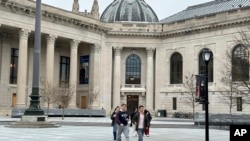
It’s tough to gain admission to Yale University, and it’s getting even tougher for international students as standout students from around the world set their sights on Yale.
The Yale Dale News, the campus newspaper, takes a look at the situation here.
- By VOA News
Student from Ethiopia says Whitman College culture made it easy to settle in

Ruth Chane, a computer science major from Ethiopia, writes about her experiences settling into student life at Whitman College in the U.S. state of Washington.
"The community at Whitman College made sure I felt welcomed even before I stepped foot on campus," she says.
- By VOA News
Claremont Colleges student gets a shock when she heads home to Shanghai

In The Student Life, the student newspaper for the Claremont Colleges, a consortium of five liberal art colleges and two graduate schools in Claremont, California, student Rochelle Lu writes about readjusting to her Shanghai home after spending a semester in the United States.
- By VOA News
Cedarville University aims to ease transition for international students
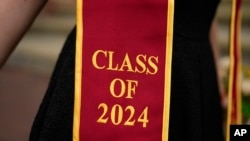
Cedarville University in the U.S. state of Ohio says it’s got more than 140 international students representing 44 countries.
Here, the school interviews Jonathan Sutton, director of international student services. He talks about his job and the opportunities for international students on campus.
- By VOA News
Morehouse College offers prospective students tips on applying and thriving
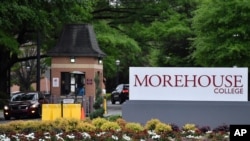
Morehouse College, a private, historically Black liberal arts college in the U.S. state of Georgia, offers a guide for international students interested in attending the school.
Among the tips to apply and thrive at Morehouse:
- Take advantage of the school’s orientation program
- Turn to the school’s Center for Academic Success for tutoring, support and more
- Immerse yourself in campus life via clubs and societies
- By Reuters
US reviews Columbia University contracts, grants over antisemitism allegations

The administration of President Donald Trump said on Monday it will review Columbia University's federal contracts and grants over allegations of antisemitism, which it says the educational institution has shown inaction in tackling.
Rights advocates note rising antisemitism, Islamophobia and anti-Arab bias since U.S. ally Israel's devastating military assault on Gaza began after Palestinian Hamas militants' deadly October 2023 attack.
The Justice Department said a month ago it formed a task force to fight antisemitism. The U.S. Departments of Health and Education and the General Services Administration jointly made the review announcement on Monday.
"The Federal Government's Task Force to Combat Anti-Semitism is considering Stop Work Orders for $51.4 million in contracts between Columbia University and the Federal Government," the joint statement said.
The agencies said no contracting actions had been taken yet.
"The task force will also conduct a comprehensive review of the more than $5 billion in federal grant commitments to Columbia University."
The agencies did not respond to requests for comment on whether there were similar reviews over allegations of Islamophobia and anti-Arab bias.
Columbia had no immediate comment. It previously said it made efforts to tackle antisemitism.
College protests
Trump has signed an executive order to combat antisemitism and pledged to deport non-citizen college students and others who took part in pro-Palestinian protests.
Columbia was at the center of college protests in which demonstrators demanded an end to U.S. support for Israel due to the humanitarian crisis caused by Israel's assault on Gaza. There were allegations of antisemitism and Islamophobia in protests and counter-protests.
During last summer's demonstrations around the country, classes were canceled, some university administrators resigned and student protesters were suspended and arrested.
While the intensity of protests has decreased in recent months, there were some demonstrations last week in New York after the expulsion of two students at Columbia University-affiliated Barnard College and after New York Governor Kathy Hochul ordered the removal of a Palestinian studies job listing at Hunter College.
A third student at Barnard College has since been expelled, this one related to the occupation of the Hamilton Hall building at Columbia last year.
Canada’s immigration overhaul signals global shift in student migration
From Europe to North America, nations are tightening their immigration policies. Now Canada, long seen as one of the world's most welcoming nations, has introduced sweeping changes affecting international students. The reforms highlight a growing global trend toward more restrictive immigration policies. Arzouma Kompaore reports from Calgary.
Trump administration opens antisemitism inquiries at 5 colleges, including Columbia and Berkeley

The Trump administration is opening new investigations into allegations of antisemitism at five U.S. universities including Columbia and the University of California, Berkeley, the Education Department announced Monday.
It's part of President Donald Trump's promise to take a tougher stance against campus antisemitism and deal out harsher penalties than the Biden administration, which settled a flurry of cases with universities in its final weeks. It comes the same day the Justice Department announced a new task force to root out antisemitism on college campuses.
In an order signed last week, Trump called for aggressive action to fight anti-Jewish bias on campuses, including the deportation of foreign students who have participated in pro-Palestinian protests.
Along with Columbia and Berkeley, the department is now investigating the University of Minnesota, Northwestern University and Portland State University. The cases were opened using the department's power to launch its own civil rights reviews, unlike the majority of investigations, which stem from complaints.
Messages seeking comment were left with all five universities.
A statement from the Education Department criticized colleges for tolerating antisemitism after Hamas' Oct. 7, 2023, attack on Israel and a wave of pro-Palestinian protests that followed. It also criticized the Biden administration for negotiating "toothless" resolutions that failed to hold schools accountable.
"Today, the Department is putting universities, colleges, and K-12 schools on notice: this administration will not tolerate continued institutional indifference to the wellbeing of Jewish students on American campuses," said Craig Trainor, the agency's acting assistant secretary for civil rights.
The department didn't provide details about the inquiries or how it decided which schools are being targeted. Presidents of Columbia and Northwestern were among those called to testify on Capitol Hill last year as Republicans sought accountability for allegations of antisemitism. The hearings contributed to the resignation of multiple university presidents, including Columbia's Minouche Shafik.
An October report from House Republicans accused Columbia of failing to punish pro-Palestinian students who took over a campus building, and it called Northwestern's negotiations with student protesters a "stunning capitulation."
House Republicans applauded the new investigations. Representative Tim Walberg, chair of the Education and Workforce Committee, said he was "glad that we finally have an administration who is taking action to protect Jewish students."
Trump's order also calls for a full review of antisemitism complaints filed with the Education Department since Oct. 7, 2023, including pending and resolved cases from the Biden administration. It encourages the Justice Department to take action to enforce civil rights laws.
Last week's order drew backlash from civil rights groups who said it violated First Amendment rights that protect political speech.
The new task force announced Monday includes the Justice and Education departments along with Health and Human Services.
"The Department takes seriously our responsibility to eradicate this hatred wherever it is found," said Leo Terrell, assistant attorney general for civil rights. "The Task Force to Combat Anti-Semitism is the first step in giving life to President Trump's renewed commitment to ending anti-Semitism in our schools."
- By VOA News
STEM, business top subjects for international students
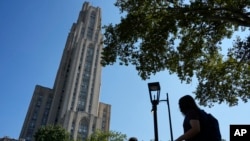
The Times of India breaks down the most popular subjects for international students to study in the U.S.
STEM and business lead the pack. Read the full story here. (January 2025)
- By VOA News
Safety and visa difficulties among misconceptions about US colleges

U.S. News & World report addresses some of the misconceptions about U.S. colleges and universities, including the difficulty of getting a visa.
Read the full story here. (January 2025)
- By VOA News
Work opportunities help draw international students to US schools
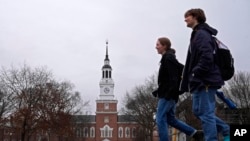
US News & World Report details the three top factors in foreign students' decision to study in the U.S. They include research opportunities and the reputation of U.S. degrees. Read the full story here. (December 2024)
- By VOA News
British student talks about her culture shock in Ohio

A British student who did a year abroad at Bowling Green State University in Ohio talks about adjusting to life in America in a TikTok video, Newsweek magazine reports.
Among the biggest surprises? Portion sizes, jaywalking laws and dorm room beds.
Read the full story here. (December 2024)
- By VOA News
Harvard's Chan School tells international students what to expect
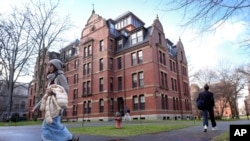
Harvard's T.H. Chan School of Public Health reaches out to international students by detailing the international student experience at the school.
Learn more about housing, life in Boston and more here.
- By Reuters
China unveils plan to build 'strong education nation' by 2035

China issued its first national action plan to build a "strong education nation" by 2035, which it said would help coordinate its education development, improve efficiencies in innovation and build a "strong country."
The plan, issued Sunday by the Communist Party's central committee and the State Council, aims to establish a "high quality education system" with accessibility and quality "among the best in the world."
The announcement was made after data on Friday showed China's population fell for a third consecutive year in 2024, with the number of deaths outpacing a slight increase in births, and experts cautioning that the downturn will worsen in the coming years.
High childcare and education costs have been a key factor for many young Chinese opting out of having children, at a time when many face uncertainty over their job prospects amid sluggish economic growth.
"By 2035, an education power will be built," the official Xinhua news agency said, adding that China would explore gradually expanding the scope of free education, increase "high-quality" undergraduate enrolment, expand postgraduate education, and raise the proportion of doctoral students.
The plan aims to promote "healthy growth and all-round development of students," making sure primary and secondary school students have at least two hours of physical activity daily, to effectively control the myopia, or nearsightedness, and obesity rates.
"Popularizing" mental health education and establishing a national student mental health monitoring and early warning system would also be implemented, it said.
It also aims to narrow the gap between urban and rural areas to improve the operating conditions of small-scale rural schools and improve the care system for children with disabilities and those belonging to agricultural migrant populations.
The plan also aims to steadily increase the supply of kindergarten places and the accessibility of preschool education.
- By VOA News
A look at financial aid options for international graduate students in US
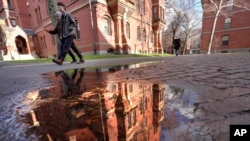
The Open Notebook, a site focusing on educating journalists who cover science, has complied a list of U.S. graduate program financial aid information for international students.











